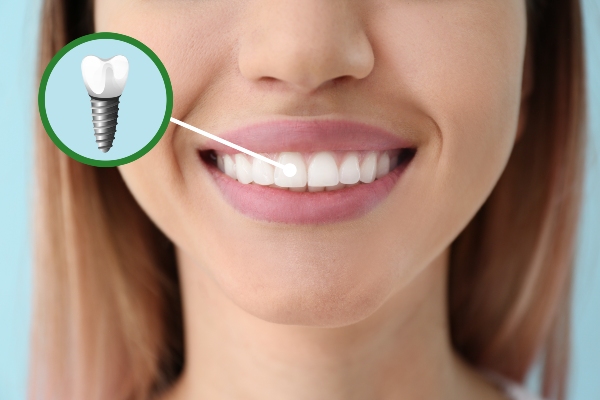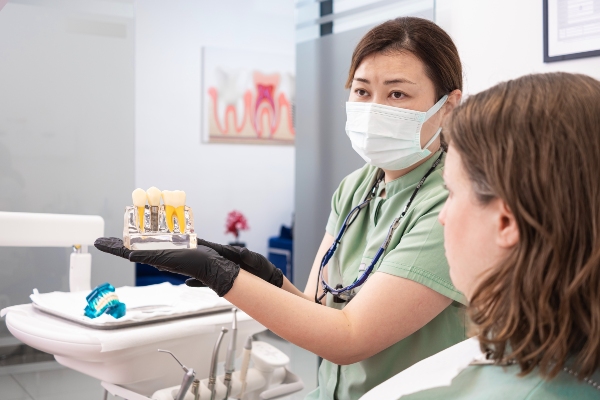Is Laser Dentistry Painless?

Many people dread going to the dentist because of the pain they associate with the drill, scalpel, and numbing shots. If this describes you, laser dentistry may be an option worth considering as a relatively pain-free alternative to traditional methods. For many patients, dental laser treatments help them manage dental anxieties while ensuring they get the care and treatment they need for better oral health.
According to research published in the Journal of Dental Hygiene, anywhere between 50% and 80% of American adults have some type of dental anxiety. While this is not necessarily surprising, it can be problematic. More than 20% of those who have dental anxiety do not see a dentist on a routine basis because of it. Between 9% and 15% of dentally anxious patients do not receive dental care at all.
Seeing a dentist at least twice a year is recommended for good oral health. Professional cleanings remove plaque and tartar buildup, improving the appearance of teeth while reducing the risk for cavities and decay. Regular cleanings can also help with bad breath and gum disease. Perhaps the most important part of a dental checkup is the screening portion. X-rays and meticulous visual exams can allow dentists to detect serious problems early, long before symptoms arise. Early detection provides patients more flexibility with their treatment options and may often result in a more favorable outcome overall.
People with dental anxiety may avoid cleanings and treatments but sacrifice their dental and overall health in the process. Laser dentistry offers an easier, more tolerable experience for many patients that can help encourage better routine care.
How lasers work
Dental lasers use heat and light to vaporize or reshape tissue and remove problematic tooth decay. They are approved by the Food and Drug Administration (FDA) and looked at with optimism by the American Dental Association.
Lasers can treat issues with both hard tissue (teeth) and soft tissue (gums). Your dentist will choose the laser that is most appropriate for your needs. The beam of light reacts with the tissue on contact, allowing your dentist to remove the tissue or shape it. It can also stimulate the tissue and encourage regrowth.
Lasers are most commonly used to treat:
- Tooth decay
- Gum disease
- Nerve damage
- Infection
- Sleep apnea
- TMJ
- Sensitivity
Your dentist may also recommend a dental laser for longer-lasting teeth whitening.
Why laser dentistry causes less pain
Laser technology uses high-energy, targeted beams of light to accurately pinpoint areas of your mouth that need treatment. This often eliminates the need for a drill or scalpel.
Without a drill or other metal tools in your mouth, you or your child will be significantly more comfortable in the dental chair. Knowing that your laser dentistry procedure will be relatively painless can also result in little to no anxiety beforehand. During the process, you will not experience the vibrations or noise that comes with traditional dentistry and can relax while the laser does the work.
In addition, many lasers use water to prevent dehydration of the tooth. A lack of hydration is often a cause of pain linked to traditional dental methods.
Because the laser is so precise, the tissue surrounding the area where you are having dental work done is more protected. You should have less bleeding and damage in and around affected parts of your teeth and gums. In many cases, this makes stitches unnecessary and significantly reduces pain and discomfort following your procedure.
A lesser-known cause of post-procedure pain is bacterial infection due to improper aftercare. Lasers sterilize the areas they touch, creating less likelihood that you will get an infection. Without stitches to care for and a quicker recovery time, you may also spend less time with your hands in your mouth, which further reduces the risk of introducing new bacteria while your gums and other tissues heal.
By preserving more of the area surrounding your tooth or gum tissue, lasers can also help you maintain good oral health and prevent larger — and possibly more painful — problems later on.
Conclusion
If you are anxious about going to the dentist due to pain — or the associated numbness, swelling, and grogginess following your visit — know that putting off necessary dental work can lead to more extensive damage later. Thanks to laser dentistry, you can have problematic issues treated now in a relatively pain-free manner. Talk with your dentist about which options can help make your next visit much more tolerable.
Request an appointment here: https://cosmeticdentistdallastx.com or call Lalangas Family Dentistry at (972) 534-6008 for an appointment in our Dallas office.
Check out what others are saying about our dental services on Yelp: Laser Dentistry in Dallas, TX.
Related Posts
When it comes to achieving a beautiful and confident smile, the expertise of an implant dentist is essential. Smile makeovers are a comprehensive dental procedure involving restoring and improving a patient's teeth and gums. With the latest advancements in dentistry, patients can achieve their dream smiles with the help of a dentist who specializes in…
Implant dentists provide a teeth replacement option that closely resembles natural teeth. Whether a patient is missing one, many, or all of their teeth, dental implants look and function similarly to natural teeth with the added benefit of replacing tooth roots and stimulating the jawbone. This jawbone stimulation is a benefit other teeth replacement options…
Dental veneers are a popular cosmetic solution for people looking to improve their smile, but not every person is an ideal candidate. Before moving forward with dental veneers, it helps to understand the procedure, maintenance, and potential results. Asking the right questions not only helps make the process go smoothly, but also helps patients become…
There are many different types of dental specialists, but if you are looking for one that can help you with missing teeth, then what you need is an implant dentist. This particular type of dentist specializes in the installation of dental implants for missing teeth. Figuring out whether or not dental implants are right for…


